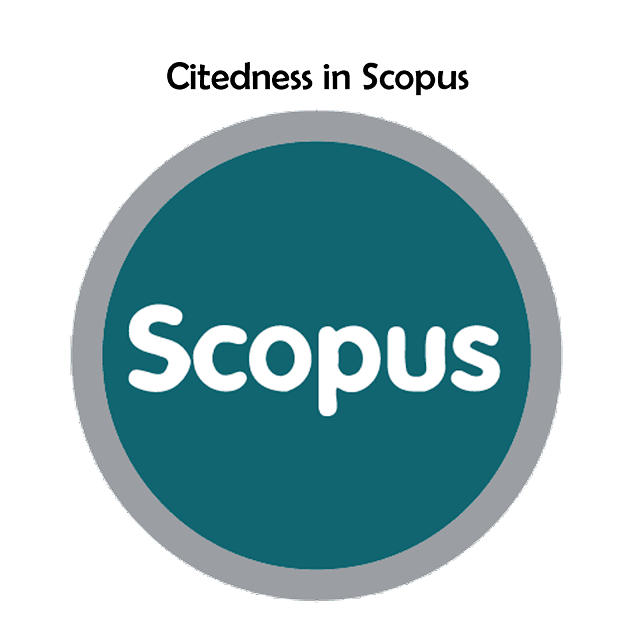An Enhanced Mean Value Theorem with Bisection Technique to Elevate User Focus Metrics in Talent Finder Applications
M Zainal Arifin(1*); Aji Prasetya Wibawa(2); Moh Safii(3); Agustinus Noertjahyana(4); Ahmad Naim Che Pee(5);
(1) Universitas Negeri Malang
(2) Universitas Negeri Malang
(3) Universitas Negeri Malang
(4) Petra Christian University
(5) University Teknikal Malaysia Melaka
(*) Corresponding Author
AbstractContemporary digital workplaces face pervasive distractions (e.g., notifications, multitasking), yet talent-assessment systems rarely quantify their impact on attention. To address this gap, we integrate the classical Mean Value Theorem (MVT) with an adaptive bisection algorithm to model user-focus dynamics in talent-matching applications. MVT’s limit-based formulation captures continuous attentional shifts, while the iterative bisection method focus metrics by capturing dynamic attentional shifts through the mean toward optimal focus equilibrium, ensuring temporal continuity and rapid convergence. A controlled experiment involving Universitas Negeri Malang undergraduate students tested the Enhanced Mean Value Theorem–Bisection (EMVT-B) method in four simulated workplace scenarios. Participants selected Focus-oriented options over alternative strengths (Communication, Input, Relator, Adaptability) in approximately 65% of decisions, highlighting moderate yet improvable attentional commitment. Sensitivity analysis indicated that increasing the mean-shift threshold by 0.05 could raise Focus-oriented selections to 72%, emphasizing the method's practical impact. These findings establish EMVT-B as both a diagnostic and prescriptive tool, quantifying attentional stability while providing personalized strategies to enhance user focus. Future research should examine longitudinal applications and broader talent portfolios.
KeywordsAttention Optimization; Bisection Method; Mean Value Theorem (MVT); Talent Finder; User Focus Metrics.
|
Full Text:PDF |
Article MetricsAbstract view: 276 timesPDF view: 89 times |
Digital Object Identifier https://doi.org/10.33096/ilkom.v17i2.2822.140-149 https://doi.org/10.33096/ilkom.v17i2.2822.140-149
|
Cite |
References
Md. K. Hasan, “Digital multitasking and hyperactivity: unveiling the hidden costs to brain health,” Annals of Medicine and Surgery, vol. 86, no. 11, p. 6371, Nov. 2024, doi: 10.1097/MS9.0000000000002576.
A. Nabung, “The Impact of Multitasking With Digital Devices on Classroom Learning: A Critical Review on the Future of Digital Distraction in Education,” vol. 14, no. 6, pp. 369–383, 2024, doi: 10.17265/2161-623X/2024.06.005.
X. Pan, X. Zhao, H. Shen, and Q. Chen, “Do human work interruptions bring positive affective responses?—Based on the mediation of coping potential and the moderation of polychronicity,” Acta Psychol (Amst), vol. 240, p. 104038, Oct. 2023, doi: 10.1016/J.ACTPSY.2023.104038.
J. T. Polzer, “The rise of people analytics and the future of organizational research,” Res Organ Behav, vol. 42, p. 100181, Dec. 2022, doi: 10.1016/J.RIOB.2023.100181.
H. Song and M. D. Rosenberg, “Predicting attention across time and contexts with functional brain connectivity,” Curr Opin Behav Sci, vol. 40, pp. 33–44, Aug. 2021, doi: 10.1016/J.COBEHA.2020.12.007.
S. Wohltjen and T. Wheatley, “Interpersonal eye-tracking reveals the dynamics of interacting minds,” Front Hum Neurosci, vol. 18, p. 1356680, Mar. 2024, doi: 10.3389/FNHUM.2024.1356680/XML.
H. Huang et al., “Real-Time Attention Regulation and Cognitive Monitoring Using a Wearable EEG-Based BCI,” IEEE Trans Biomed Eng, vol. 72, no. 2, pp. 716–724, 2025, doi: 10.1109/TBME.2024.3468351,.
T. H. Rasmussen, M. Ulrich, and D. Ulrich, “Moving People Analytics From Insight to Impact,” Human Resource Development Review, vol. 23, no. 1, pp. 11–29, Mar. 2024.
F. Martínez, I. Martínez, M. K. A. Kaabar, and S. Paredes, “Generalized Conformable Mean Value Theorems with Applications to Multivariable Calculus,” Journal of Mathematics, vol. 2021, no. 1, p. 5528537, Jan. 2021, doi: 10.1155/2021/5528537.
N. Koceić-Bilan and I. Mirošević, “The Mean Value Theorem in the Context of Generalized Approach to Differentiability,” Mathematics 2023, Vol. 11, Page 4294, vol. 11, no. 20, p. 4294, Oct. 2023, doi: 10.3390/MATH11204294.
“View of Statistical Study of Bisection Method for Cubic Equations with Random Coefficients.” Accessed: Aug. 05, 2025.
Y. Liu and R. Lin, “A Bisection method for computing the proximal operator of the ℓp-norm for any 0
P. C. Austin, “The iterative bisection procedure: a useful tool for determining parameter values in data-generating processes in Monte Carlo simulations,” BMC Med Res Methodol, vol. 23, no. 1, pp. 1–10, Dec. 2023, doi: 10.1186/S12874-023-01836-5/TABLES/4.
A. El Mouatasim and A. Ettahiri, “Conditional Gradient And Bisection Algorithms For Non-convex Optimization Problem With Random Perturbation *”, Accessed: Aug. 05, 2025.
A. Corriveau, K. Yoo, Y. H. Kwon, M. M. Chun, and M. D. Rosenberg, “Functional connectome stability and optimality are markers of cognitive performance,” Cerebral Cortex, vol. 33, no. 8, pp. 5025–5041, Apr. 2023, doi: 10.1093/CERCOR/BHAC396.
D. T. Seeburger et al., “Time-varying Functional Connectivity Predicts Fluctuations in Sustained Attention in a Serial Tapping Task,” Cogn Affect Behav Neurosci, vol. 24, no. 1, p. 111, Feb. 2024, doi: 10.3758/S13415-024-01156-1.
A. Corriveau, J. Ke, H. Terashima, H. M. Kondo, and M. D. Rosenberg, “Functional brain networks predicting sustained attention are not specific to perceptual modality,” Network Neuroscience, vol. 9, no. 1, p. 303, Mar. 2025, doi: 10.1162/NETN_A_00430.
N. Tusquellas, R. Palau, and R. Santiago, “Analysis of the potential of artificial intelligence for professional development and talent management: A systematic literature review,” International Journal of Information Management Data Insights, vol. 4, no. 2, p. 100288, Nov. 2024, doi: 10.1016/J.JJIMEI.2024.100288.
D. Talypova, A. Visuri, A. Shahu, A. Wang, and P. Wintersberger, “Are Six Minutes of Focus Enough? An Exploratory Study of Multitasking Patterns in Workplace Environments.,” pp. 1–15, Jun. 2025, doi: 10.1145/3729176.3729198.
M.-R. Wang, P.-X. Ying, and F.-C. Kong, “Neural correlates of media multitasking influencing switching but not sustained attention among college students: Evidence from a hierarchical Bayesian perspective,” Comput Educ, p. 105418, Jul. 2025, doi: 10.1016/J.COMPEDU.2025.105418.
M. Heitmayer, “When the phone’s away, people use their computer to play: distance to the smartphone reduces device usage but not overall distraction and task fragmentation during work,” Front Comput Sci, vol. 7, p. 1422244, Mar. 2025, doi: 10.3389/FCOMP.2025.1422244/BIBTEX.
“The Productivity Killer. How Task Switching Steals Your Time and… | by Brian Peddle | Brian Peddle.” Accessed: Aug. 05, 2025.
M. van Woerkom, R. Bauwens, S. Gürbüz, and E. Brouwers, “Enhancing person-job fit: Who needs a strengths-based leader to fit their job?,” J Vocat Behav, vol. 154, p. 104044, Oct. 2024, doi: 10.1016/J.JVB.2024.104044.
S. E. Smith, P. Ayers, A. Sikora Newsome, L. D. Logan, and M. Fulford, “Pharmacist perceptions of CliftonStrengths® themes important for success in advanced cardiovascular life support,” J Clin Pharm Ther, vol. 46, no. 1, p. 143, Feb. 2020, doi: 10.1111/JCPT.13272.
Bambang Masudi, Rachmad Ilham, and Suharto Suharto, “Digital Talent Management: Adaptive Strategies in the Era of Industry 4.0 Transformation,” JUMBIWIRA : Jurnal Manajemen Bisnis Kewirausahaan, vol. 4, no. 1, pp. 436–448, Apr. 2025, doi: 10.56910/JUMBIWIRA.V4I1.2735.
“Adaptability: Go With the Flow and Embrace Change | Gallup.” Accessed: Aug. 05, 2025.
K. Breevaart, M. van Woerkom, J. Wang, and N. Planken, “Strengths-Based Leadership: A Critical Review to Guide Future Research,” J Leadersh Organ Stud, 2025.
Q. Xu and H. Li, “The inverse proposition of Taylor-type mean value theorem,” International Journal of Statistics and Applied Mathematics, vol. 8, no. 5, pp. 116–122, 2023, Accessed: Aug. 05, 2025.
M. M. de L. Barboza and F. M. Barboza, “The Mean Value Theorem: Analytical Proof and Computational Approaches,” Jan. 2025, Accessed: Aug. 05, 2025.
P. Finotelli and F. Eustache, “Mathematical modeling of human memory,” Front Psychol, vol. 14, p. 1298235, Dec. 2023, doi: 10.3389/FPSYG.2023.1298235/BIBTEX.
E. K. Miller, S. L. Brincat, and J. E. Roy, “Cognition is an emergent property,” Curr Opin Behav Sci, vol. 57, p. 101388, Jun. 2024, doi: 10.1016/J.COBEHA.2024.101388.
S. Ni, B. Harris, and P. Gong, “Distributed and dynamical communication: a mechanism for flexible cortico-cortical interactions and its functional roles in visual attention,” Commun Biol, vol. 7, no. 1, pp. 1–20, Dec. 2024.
S. Musslick and A. Bizyaeva, “Examining cognitive flexibility and stability through the lens of dynamical systems,” Curr Opin Behav Sci, vol. 57, p. 101375, Jun. 2024, doi: 10.1016/J.COBEHA.2024.101375.
J. Sawicki et al., “View Online Export Citation CrossMark Perspectives on adaptive dynamical systems Chaos PERSPECTIVE scitation.org/journal/cha Perspectives on adaptive dynamical systems Chaos PERSPECTIVE scitation.org/journal/cha,” Chaos, vol. 33, p. 71501, 2023, doi: 10.1063/5.0147231.
H. Gao, S. Kaltenbach, and P. Koumoutsakos, “Generative learning for forecasting the dynamics of high-dimensional complex systems,” Nature Communications , vol. 15, no. 1, pp. 1–11, Dec. 2024.
Y. You, “The Mean Value Theorem and It’s Application,” Science and Technology of Engineering, Chemistry and Environmental Protection, vol. 1, no. 1, Oct. 2024, doi: 10.61173/C0SHMK87.
Refbacks
- There are currently no refbacks.
Copyright (c) 2025 M Zainal Arifin

This work is licensed under a Creative Commons Attribution-ShareAlike 4.0 International License.







